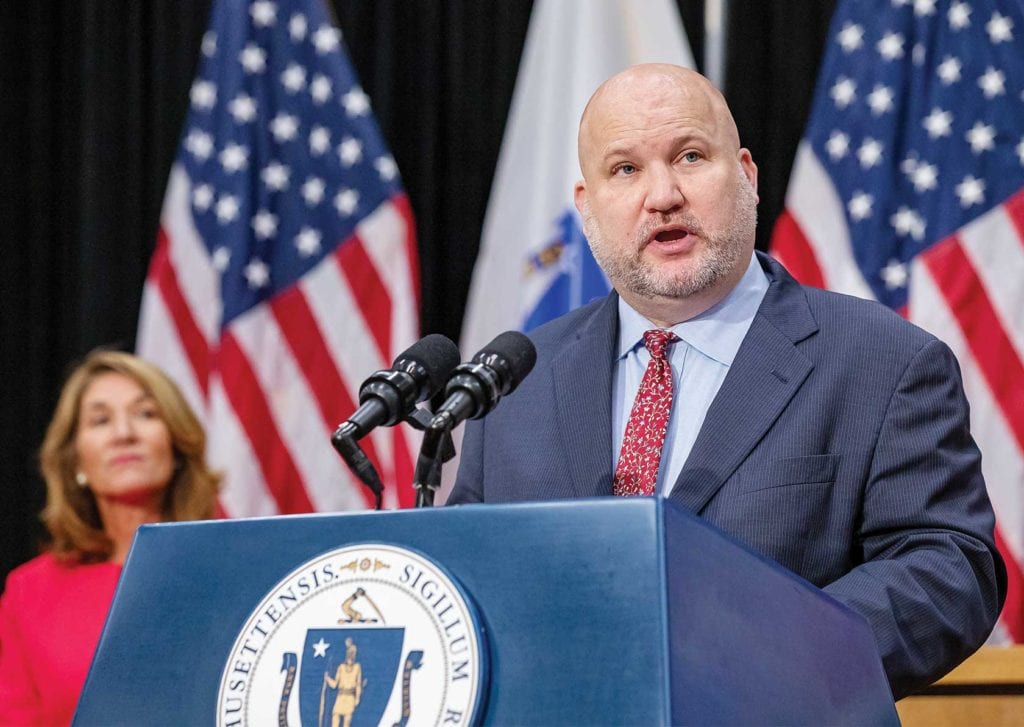
The state’s three largest teachers unions are calling on the state to use a phased approach to resuming classes in September, allowing students to return to school buildings only after city and state authorities guarantee appropriate physical distancing is possible, school buildings have in place supplies and staff for cleaning, and they have adequate ventilation and HVAC systems.
The proposal, released last week, outlines the steps that officials from the Mass Teachers Union, the American Federation of Teachers and the Boston Teachers Union say need to be in place in order for teachers, students, and their parents and family members to be safe during the COVID pandemic.
It calls for more funding, higher staffing levels, state provision of personal protective equipment for students and school staff, and state funding for existing child care programs for parents and school staff.
Boston Teachers Union President Jessica Tang said state funding will be critically important for districts.
“If we don’t have additional funding, we won’t be able to open schools equitably and safely,” she said.
The union officials are also calling for suspending the MCAS exam for the coming school year and waiving it as a graduation requirement for high school students during the pandemic, stating that the mandatory examination would hamper efforts to reconfigure curricula to meet students’ current needs.
The proposal comes as debates around a return to school have become increasingly politicized. President Donald Trump’s threats earlier this month to withhold federal funding from districts that don’t return to in-school instruction ratcheted up the tension as states and local districts across the country wrestle with growing coronavirus infection rates and lack of access to the testing and personal protective equipment that many school officials say they will need to ensure safety.
The Los Angeles and San Diego school districts are among the largest that already have called off in-school instruction for the fall semester.
In Massachusetts, state Education Secretary Jeffrey Riley has directed school districts to prioritize in-person instruction in their planning for the fall, citing low coronavirus transmission rates in the state. Riley further instructed districts to devise three sets of plans: one for in-school instruction, one for remote learning and one that would blend the two approaches. The secretary asked that districts not disclose their plans until Aug. 15.
“While preparations for the fall must move forward, we are still waiting for key information that will directly impact the best-fit reopening model for each community,” Riley wrote in a memo to local school officials.
The unions’ proposal addresses all three scenarios and places an emphasis on the social-emotional needs students will likely face amid a pandemic that has claimed family members’ lives.
“Having spent approximately 25 percent of the 2019-2020 school year in crisis mode and learning remotely, all of our students — regardless of socioeconomic status or race — will be coming back with social, emotional and academic needs that we don’t yet fully understand,” the proposal reads.
The union officials say educators will likely need time to develop new skills, strategies and teaching methods to adapt to students’ needs during the pandemic and that school departments will likely need time to adapt buildings in the event of a return to in-school instruction.
Tang said she doubts Boston’s schools will be able to handle the transportation and physical distancing needs that a return to full-time classes would demand.
“Realistically, it’s going to be hybrid or remote,” she said. “They have to plan for flexibility. Even if we begin hybrid, we make have to go back to remote.”
BPS officials are still formulating their reopening plans and have not released information publicly. Tang says she would like for students, parents and teachers to have input into the plans.
“We have only been given a basic overview of BPS reopening plans,” she said. “We’d really like to get into detailed plans to ensure they’re incorporating feedback from those of us who will be implementing them on the ground.”
Four-phase proposal
The union officials’ plan calls for a first phase in which teachers and school officials would prepare classrooms for students, reconfigure desks, develop curricula that address students social emotional needs, and learn about health and safety protocols.
A second phase would entail educators meeting with students and families, either remotely or in person, to prepare them for the new health and safety protocols and conduct social-emotional wellness checks.
The third phase would consist of the resumption of instruction in the first six weeks of school, whether in-person or remotely, with an emphasis on social-emotional learning. Curriculum and instruction would be informed by students’ needs as assessed by educators.
A fourth phase would allow for assessment of public health data and education progress under the initial reopening plan. Schools and districts would assess whether to continue with their initial plan or make modifications.
The union officials are calling on the state to assess the availability in each district of personal protective equipment and technology needed for remote learning, and to provide such equipment for those districts lacking the gear. Reopening for in-school instruction should be based on assessments of whether buildings have adequate ventilation and well-functioning HVAC systems.
While Riley’s guidelines for schools call for a minimum of three feet of distance between students in classrooms, the union officials are calling for a six-foot minimum distance.
Open question
Ruby Reyes, who heads the Boston Education Justice Alliance, said parents her group has surveyed are split, with some in support of returning to in-class instruction and others opposed.
“Some families desperately need schools to reopen because they’re essential workers or because their kids aren’t learning remotely,” she said. “Kids learn in a social environment. They go to school because of the social experiences they have there. But how do you mitigate that with the fact that we just don’t know enough about this virus?”







